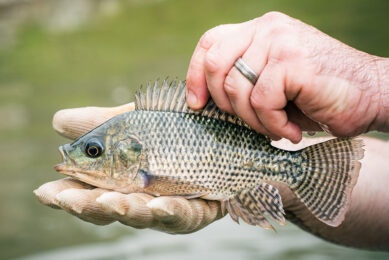Aquaculture – a sustainable alternative!
The current situation of the world food supply calls for supreme efforts to ensure the increasing requirements of the growing world population for staple diets and high-quality food and to bridge the widening gap in food demand and food supply especially in the developing world.
The current situation of the world food supply calls for supreme efforts to ensure the increasing requirements of the growing world population for staple diets and high-quality food and to bridge the widening gap in food demand and food supply especially in the developing world. More than one billion people are dependent on fish as their main protein source, and their number is likely to increase further, since world population is increasing with an estimated annual population growth rate of 2.0% (Lückstädt, 2004).
From small scale to multi-national business
The global production of fish from aquaculture on the other hand has grown rapidly during the second half of the last century, therefore contributing significantly to the world’s supply of fish for human consumption. Aquaculture now accounts for nearly half (45%) of the world’s food fish and this increase is expected to reach 50% in 2015. Started primarily as an Asian freshwater food production system, aquaculture has reached now all continents and includes a wide range of species and production systems. From an activity that was principally small-scale and family-based, aquaculture involves now multi-national companies too.
Majority comes from China
World aquaculture reached 48.1 million tonnes in 2005 (FAO 2007) with an average annual growth rate of 8.8 percent since the 1950ies, making it at present the only growing sector within the fishing industry and furthermore the fastest growing food production sector in the world. The current production had a farm-gate value of US$70.3 billion, which is increased significantly in value towards the consumer. The vast majority of aquatic production comes from Asia and more precisely from China, which counts for more than 67% of the overall world fish production. Major producers in Europe, America and Africa are Norway, Chile and Egypt.
Call for sustainability
Recently, growing awareness from consumers and producers of aquaculture species has resulted in calls for responsible and sustainable aquaculture. Public opinion and regulation authorities in most export countries focus now on the misuse of antibiotics in aquaculture and public attention has shifted towards production methods (Lückstädt, 2005). On the other hand, the development of new aquafeeds needs to be optimised too, since the cost of feed often accounts for 50% or more of the operational expenses for an aquaculture facility (Encarnacao, 2008).
Solution in additives
Due to the above mentioned facts, solutions needed to be found. Several feed additives may be a promising alternative for the use of in-feed antibiotics in aquaculture as well as optimising the feed efficiency, including enzymes, probiotics and last but not least organic acids or their salts.
From previous studies and trials , it can be concluded that the use of organic acid salts or acid blends is an interesting option to promote the performance of a wide variety of aquaculture species worldwide. It is also suggested that the impact of bacterial infections can be reduced, potentially leading to higher survival rates. The use of acidifiers in aquaculture can therefore be an fficient tool to achieve sustainable and economical fish and shrimp production.











